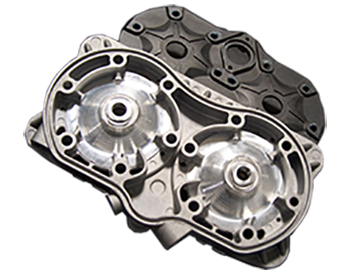FUEL REQUIREMENTS AND GENERAL THEORY ON HIGH HP 2 STROKE ENGINES
General Explanations on 2 Stroke Operation and Fuel Requirements of ANY 2 Stroke Engine
In a 2 stroke engine the REQUIRED amount of F/A needed is dependent and based on MANY different variables.
Without going to extreme details.. I will try and explain a few key points. Keep in mind, I will be para-phrasing and will not touch on every variable just a few key ones.....
1) A huge player is the combustion efficiency of the engine.. This is a factor that relates to what percentage of the F/A mix is actually converted to work on the crank. You have a combustion chamber that has "X" amount of F/A mix to convert to energy. It will only convert a certain percentage ("Y") effectively and the rest will be wasted via raw fuel out the exhaust or residual mix that will linger around the chamber and never do any useful work. It may perform some cooling functions but nothing more. In fact, it will take up "space" in the chamber and contaminate the intake charge on the next stroke.
This is always the case with a 2 stroke engine.. the "key" is to maximize this efficiency via the combustion process. In other words...increase ("Y"). This is one reason why the RK Tek 827cc kit can make 172HP on the 827 and run LESS main jet than a 140Hp stock engine. Also why the head change alone is worth 4-9 main jet sizes less.
Also one reason, why the RK Tek 827 requires MUCH less main jet than other big bores out there.
So, in short, the combustion efficiency plays a major part in how much fuel (jet) an engine requires. It is not solely based on vacuum from the engine.. Which brings me to the next "factor"
2) Pipes and crankcase vacuum: When the piston is at BDC, there will be a very strong vacuum pulse at the exhaust port. This pulse is due to the pipe's wave returning from the divergent cone.. The strength of this wave is variant on many things like, angle of the cone, location of the cone with respect to rpms and efficiency (there's that word again) of the exhaust. In any case, the fact remains that there is a strong suction pulse at the exhaust port at BDC and this pulse is a major player in how much pull there exists at the transfer ports and how much, how efficient the pipe effects are at getting the F/A mix out of the transfer ports and into the cylinder where it can be combusted.. So, once again, if the pipe is very effective in its task then there will be more mix to convert to power than there would be if the pipe as not as effective.. Hence the name "tuned pipe" . Crankcase pressure also aid the pipe in this cylinder filling..
3)Crankcase Pressures: As the piston is travelling up the stroke to TDC, it is leaving behind a negative pressure that places a signal on the needle jet of the carb. How strong this signal is will determine how strong the carb signal is and a stronger signal will pull more F/A mix fromthe carb in a shorter period of time than a weaker signal. A few things that determine this signal's strength are bore size and crankcase volume. Larger bores generally have a stronger vacuum and looser cases lower primary compression and will weaken the signal. Other factors include the stroke of the engine and the size of the carb. Shorter stroke will lessen the time the signal is present at the carb (Time =Distance (stroke) / Rate (rpms) )) So a shorter stroke will allow for less time to pull fuel from the carbs through the reeds. Carb size also plays a role.. A larger carb will have a slower velocity so there will be less time to get F/A mix through the reeds.
4)Porting arrangement: I'll touch on this briefly.... The porting arrangement of ANY 2 stroke engine will greatly effect all 3 of the things listed above...Having the mix flow to the proper areas (and not to other areas) contributes greatly to how much fuel is required and dictates the internal engine temperatures. This is another reason why some big bores require less fuel than others.
This idea that the larger and more powerful the engine the more fuel it needs is not always correct when you consider the other players at work like efficiency and internal flow characteristics (pipe effects and porting arrangement). I can tell you that the more powerful the engine is.. the less restrictive the exhaust outlet needs to be will always be true...
Ok, enough rambling.... Point being.. Engine displacement and Engine HP are not the "big cheese" in determining how much jet and engine will require. There are many players at work in making this determination... Many more than listed above..
© Copyright 2006. 2StrokeHeads.com Disclaimer
Website updated by This email address is being protected from spambots. You need JavaScript enabled to view it.
![]()


